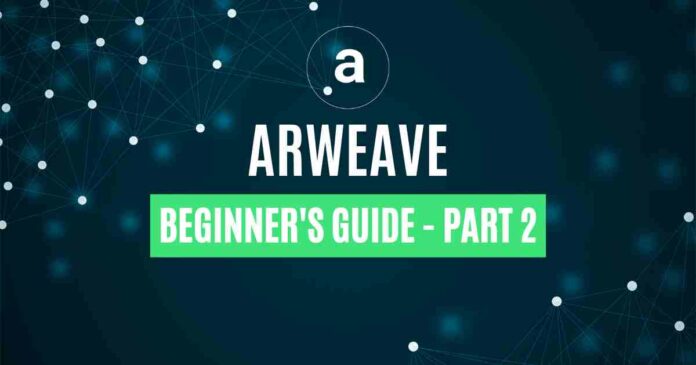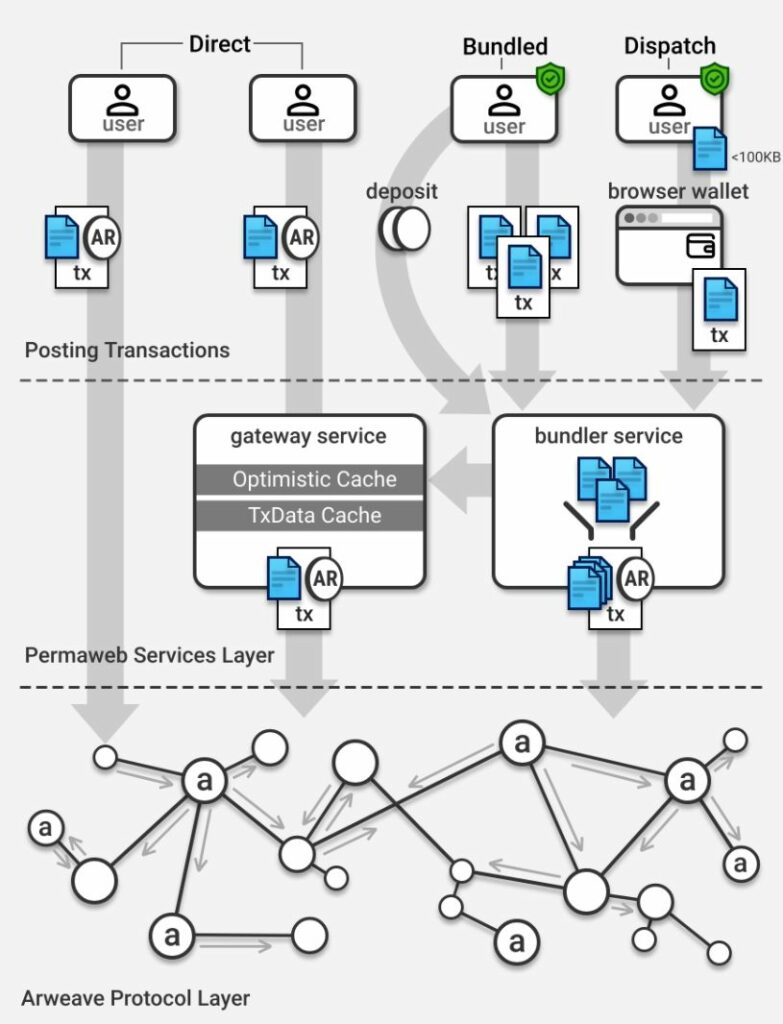This is Part 2 of two articles about Arweave. Here’s a link to Part 1. In total, over two articles, we answer 8 popular questions about Arweave.
So, let’s dive in and see what Arweave has to offer on digital data storage.
📢Happy to announce that @Meta is now utilizing Arweave for the storage of their creator's digital collectibles on @instagram!
Bringing data permanence to the giants of web2!https://t.co/7HbquIsMJg pic.twitter.com/TFef5WhrN3
— Arweave Ecosystem (@ArweaveEco) November 2, 2022
Benefits of Arweave in Storing Info
Arweave is a decentralized storage network (DSN) that offer permanent storage. This is where they distinguish themselves. Centralized storage options, like, offer short-term options. For example, Google, Amazon, or Dropbox. Other on-chain competitors also offer short- to medium-turn options. Although, keep in mind that long-term means at least 200 years.
This brings clarity and an organized option to the current chaotic storage scene. Many important documents get deleted after only a few years of online storage. Current centralized storage options stop storing data if you don’t pay. For instance, courtroom documents or research data. Arweave offers a much more practical and long-term solution.
Another advantage is that you can view all stored data on a web browser. In other words, you don’t need a wallet or any other blockchain related device.
You pay a one-time fee with the AR token, and you get permanent storage. So, you can store data in any digital format. For example, documents, music files, NFTs, or pictures. There are also plenty of blockchains that store their blockchain as a backup on Arweave. For instance, Solana, Cosmos, Near, or Avalanche.
6/8
Censorship-resistant.
Everything in the Solana dApp Store is built for a decentralized world.
dApp APKs — the packaged code for every Android app — live on @ArweaveEco, a decentralized storage provider.
They can't be censored by any authority.
— Solana Mobile (@solanamobile) January 24, 2023
What Is Proof of Access in Arweave?
Proof of Access is a consensus mechanism. Just like Bitcoin has Proof of Work (PoW) or Ethereum has Proof of Stake (PoS). A consensus mechanism allows a blockchain to work. For example, they are protocols and algorithms that confirm transactions.
With Proof of Work, miners need to solve a difficult mathematical puzzle. The miner that solves the puzzles fastest gets to confirm the new block. This will also give them a reward in Bitcoin. Proof of Stake has validators that own nodes. They can confirm transactions. However, they need to hold tokens of the blockchain in question. For example, to run an Ethereum node, you must invest in 32 ETH.
However, Arweave uses a graph model. This means that each new block links to two earlier blocks instead of one. Each new block must have a randomly selected marker from a previous block. Once they can confirm this, they can also confirm the new block.
The ‘miner’ or computer, who adds the new block, receives a reward in AR tokens. Anyone, who runs the Arweave software as a ‘miner’, can decide what kind of data they want to store. For example, you can decide to only store music files. However, the more options you offer for storage, the higher your reward will be.
1/ Main things about Arweave for newcomers. Check out this thread to find out more about Arweave, key terms, where to buy tokens, how to upload data and what tools you’ll need:https://t.co/Mcx65CohQM
— arweave.news 🐘 (@ArweaveNews) January 2, 2022
How to Mine in Arweave?
Arweave connects people who look for storage with computers that have storage space. All storage relates to digital storage. In other words, this covers, for example:
- Documents, like court records or land sale office documents.
- Music files.
- Pictures.
- Digital art.
- Movies.
- Back up for other blockchains, to store their data.
- Academic papers and research.
- Written content like newspapers or blogs.
Before you can start mining, you need to download some software. You can find a guide in the Arweave docs, on how to set this up. The software will even set up an Arweave wallet for you in case you don’t have one. A great advantage is that you need to store the whole blockchain. However, the more storage space you offer, the more rewards you receive. To get started, you need at least 8 GB of RAM. The following picture shows the four main approaches to posting transactions.
Source: Arweave’s cookbook for devs
Arweave Compatible Wallets
When using Arweave’s token, AR, you must use Arweave compatible wallets. Ethereum-based wallets like MetaMask or Trust Wallet are incompatible. That’s why we give you the choice between three good Arweave wallets:
This is an open-source wallet. In other words, everybody can access the code and use or change the code. It’s easy to set up, but this wallet has a few restrictions. For instance, it doesn’t support NFTs.
In the Arweave docs, you can find an easy-to-follow guide for setting up this wallet. As a bonus, you can also turn this into a cold storage wallet. In other words, this means that your keys will not connect to the internet. A guide to do set this up is here. There’s also an upgrade pending with Ledger, so you can integrate this wallet with a Ledger.
2. ArConnect
With this wallet, you can store and transfer Arweave’s assets. This wallet also allows accessing all permaweb dApps. A swap function is in the making. In this link, you can find a download button for the wallet and onboarding help. This wallet allows NFTs and page archiving.
The Finnie wallet is part of the Koii Network. Besides the KOII and AR tokens, it is also compatible with ETH. Finnie Wallet can also hold NFTs and has a page indexer. For more info on this wallet, you can visit their official blog.
Conclusion
This is Part 2 of a series of two articles about Arweave. We answered seven popular questions about this project. For a link to Part 1, please check the top of the page.
The current price of the AR token is $10.93. It has a market cap of $548 million. The max supply of AR tokens is 66 million. Out of these, 50 million already circulate.
⬆️ For more cryptocurrency news, check out the Altcoin Buzz YouTube channel.
⬆️ Our popular Altcoin Buzz Access group generates tons of alpha for our subscribers. And for a limited time, it’s Free. Click the link and join the conversation today.





























